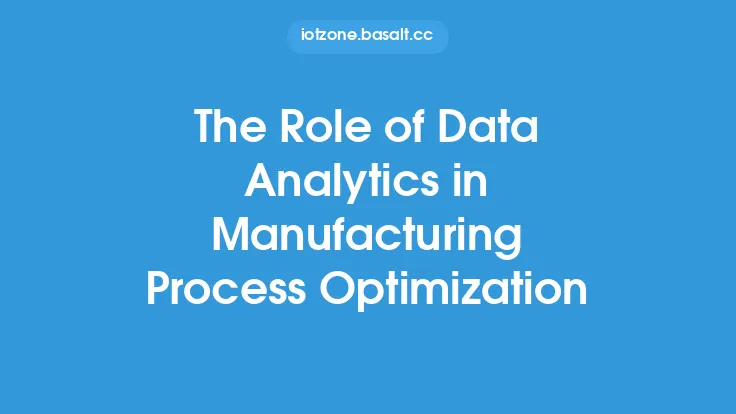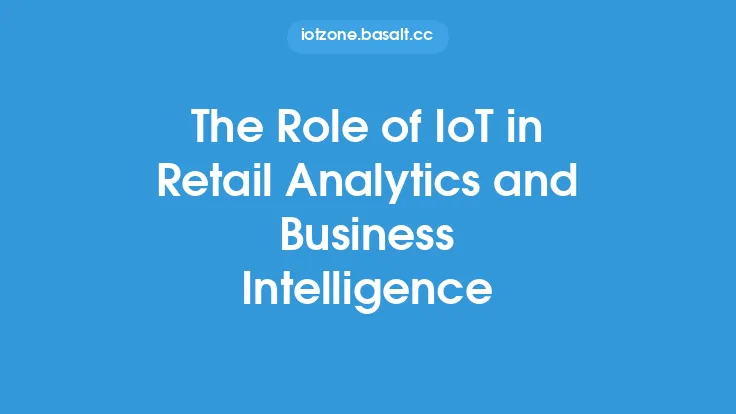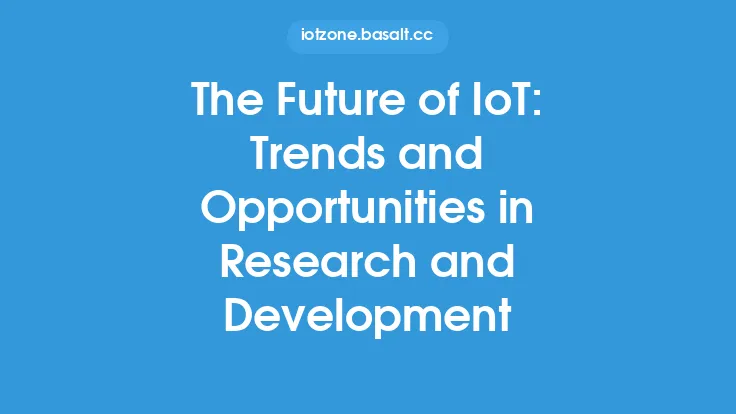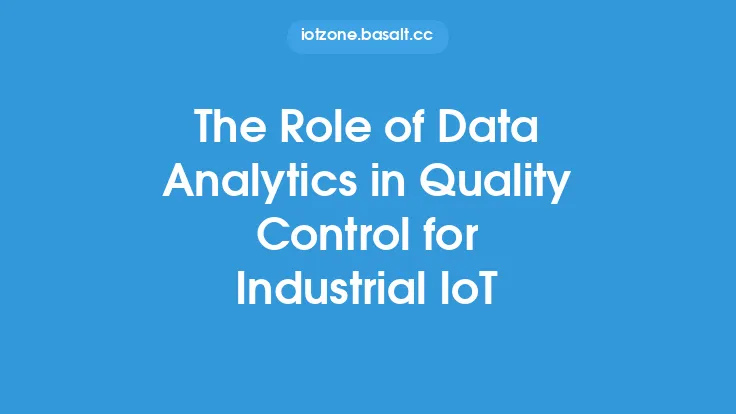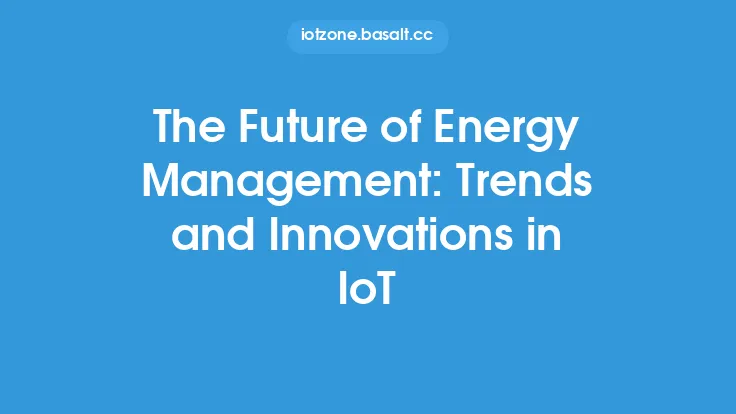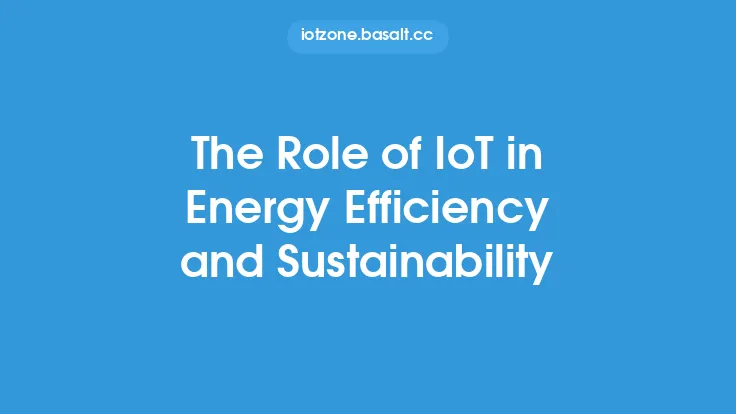The Internet of Things (IoT) has revolutionized the way we live and work, with an ever-increasing number of devices being connected to the internet and generating vast amounts of data. This data, if properly analyzed, can provide valuable insights that can help organizations make informed decisions, improve efficiency, and drive innovation. Data analytics plays a crucial role in IoT, enabling organizations to extract insights from the vast amounts of data generated by connected devices. In this article, we will explore the role of data analytics in IoT, trends, and opportunities in this field.
Introduction to IoT Data Analytics
IoT data analytics refers to the process of analyzing data generated by connected devices, such as sensors, actuators, and other smart devices. This data can be structured or unstructured and can come in various formats, including time-series data, spatial data, and text data. The goal of IoT data analytics is to extract insights from this data that can help organizations improve their operations, reduce costs, and enhance customer experience. IoT data analytics involves various techniques, including data mining, machine learning, and statistical analysis, to identify patterns, trends, and correlations in the data.
Key Components of IoT Data Analytics
There are several key components of IoT data analytics, including data ingestion, data processing, data storage, and data visualization. Data ingestion refers to the process of collecting data from various sources, including sensors, devices, and applications. Data processing involves cleaning, transforming, and analyzing the data to extract insights. Data storage refers to the process of storing the data in a scalable and secure manner, while data visualization involves presenting the insights in a meaningful and intuitive way. Some of the key technologies used in IoT data analytics include Apache Kafka, Apache Spark, and NoSQL databases such as MongoDB and Cassandra.
Trends in IoT Data Analytics
There are several trends in IoT data analytics, including the increasing use of edge computing, the adoption of artificial intelligence (AI) and machine learning (ML) algorithms, and the growing importance of data security and privacy. Edge computing refers to the process of analyzing data at the edge of the network, closer to the source of the data, to reduce latency and improve real-time decision-making. AI and ML algorithms are being used to analyze IoT data and extract insights, while data security and privacy are becoming increasingly important as the amount of IoT data grows.
Opportunities in IoT Data Analytics
There are several opportunities in IoT data analytics, including predictive maintenance, quality control, and smart cities. Predictive maintenance involves using IoT data analytics to predict when equipment is likely to fail, allowing for proactive maintenance and reducing downtime. Quality control involves using IoT data analytics to monitor the quality of products and processes, improving efficiency and reducing waste. Smart cities involve using IoT data analytics to improve the efficiency and sustainability of urban infrastructure, including transportation, energy, and water management.
Technical Challenges in IoT Data Analytics
There are several technical challenges in IoT data analytics, including data volume, velocity, and variety, as well as data security and privacy. The large volume of IoT data can be challenging to process and analyze, while the high velocity of IoT data requires real-time processing and analysis. The variety of IoT data, including structured and unstructured data, can be challenging to integrate and analyze. Data security and privacy are also major concerns, as IoT data can be sensitive and vulnerable to cyber threats.
Real-World Applications of IoT Data Analytics
There are several real-world applications of IoT data analytics, including industrial automation, transportation, and healthcare. Industrial automation involves using IoT data analytics to improve the efficiency and productivity of manufacturing processes, while transportation involves using IoT data analytics to improve the safety and efficiency of transportation systems. Healthcare involves using IoT data analytics to improve patient outcomes and reduce costs, including remote patient monitoring and personalized medicine.
Future of IoT Data Analytics
The future of IoT data analytics is exciting and rapidly evolving, with new technologies and innovations emerging all the time. Some of the key areas of research and development include edge AI, explainable AI, and autonomous systems. Edge AI involves using AI and ML algorithms at the edge of the network, closer to the source of the data, to improve real-time decision-making. Explainable AI involves using techniques such as transparency and interpretability to explain the decisions made by AI and ML algorithms. Autonomous systems involve using IoT data analytics to enable autonomous decision-making, including self-driving cars and drones.
Conclusion
In conclusion, data analytics plays a crucial role in IoT, enabling organizations to extract insights from the vast amounts of data generated by connected devices. The trends, opportunities, and technical challenges in IoT data analytics are rapidly evolving, with new technologies and innovations emerging all the time. As the amount of IoT data continues to grow, the importance of data analytics will only continue to increase, driving innovation and improvement in various industries and applications. By understanding the role of data analytics in IoT, organizations can unlock the full potential of IoT and drive business success.
